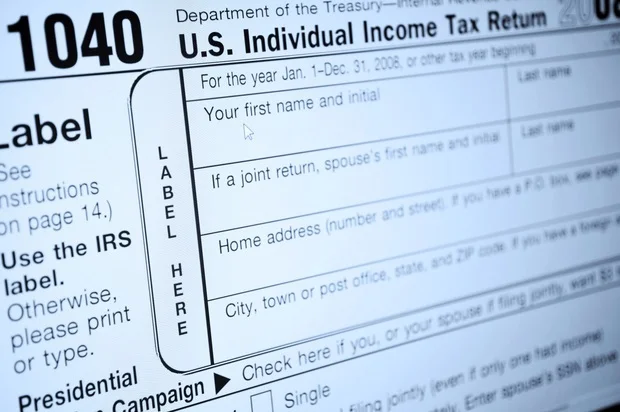Fed’s Miscalculation of Inflation Could Be Very Costly Next Year
The Federal Reserve (Fed) continues to say that the sharp rise in the inflation rate is temporary. Inflation will subside later this year, it says. As such it will keep interest rates near zero and continue to dramatically increase the money supply by purchasing $80 to $120 billion of bonds per month. If it is wrong, the US could see a runaway inflation problem that will be painful to fix.
Treasury Secretary Janet Yellen, a former chair of the Fed, sees no inflation problem. “It may be that interest rates will have to rise somewhat to make sure that our economy doesn’t overheat, even though the additional spending is relatively small relative to the size of the economy,” Yellen recently said.
Current Fed chair, Jerome Powell recently said, “We do expect that inflation will move up over the course of this year,” Powell told the House Financial Services Committee in March, citing pent-up demand and supply-chain bottlenecks. “Our best view is that the effect on inflation will be neither particularly large nor persistent.”
Other Fed governors echoed this view. Philadelphia Fed President Patrick Harker said, “At this point, we don’t expect inflation to be running out of control. We have time to move because we’re not seeing inflation running out of control. If it does, we’ll act accordingly.”
The consumer price index rose 0.6% in March (a 7.2% annualized rate), the largest month-on-month gain since 2012. In the last 12 months, prices have risen 2.6%. That’s already above the 2% Fed target. The 2.6% rate is low, mostly because the last nine months of 2020 saw almost no inflation. Prior to the .6% increase in March, the January CPI rose .3% and in February it rose .4% There is a pattern here.
The Fed believes that the price increases are due to pent-up demand, supply chain disruptions, and stagnant prices for the past few years. They believe that after the pent-up demand is exhausted and the supply chain disruptions fixed, inflation will fall back under 2%.
Suppose the Fed is wrong.
Inflation today is really caused by more than just pent-up demand and supply chain disruptions. The reasons we have inflation are 1) rising energy prices, 2) rapid growth in the money supply, 3) huge government budget deficits, and 4) a potential capital shortage. The last reason is very worrisome.
Inflation will likely not fall later this year. In fact, it may increase so that we could be looking at double-digit inflation before 2022 begins. If that is the case, the Fed will have to take very drastic actions.
Inflation will likely increase because energy prices will continue to rise. That puts upward price pressure on most products, simply because manufacturing and transportation costs will rise. Since the Biden administration has declared war on fossil fuels, the restriction in supply will keep prices rising as worldwide demand increases.
The Fed has no plans to stop increasing the money supply through its bond purchases. That means the money supply will continue to grow much faster than the economy really grows. That leads to pure inflation, regardless of what the misguided Modern Monetary Theorists say.
The Federal government’s budget deficit was more than $3 trillion last year. This year it will exceed that amount, and if Biden gets more spending bills passed, the deficit will get even larger. All of that excess demand will filter through the economy for this year and years to come, putting upward pressure on prices, perhaps creating structural inflation.
The Federal government is pulling trillions of dollars out of capital markets by selling bonds to finance the deficit. That leaves less capital available to business for expansion. Biden also wants to 1) raise the capital gains tax rate from 20% or 23.8% now, to more than 40%, 2) raise the corporate tax rate from 21% to 28%, and 3) raise the personal tax rate on the highest earners from 36% to 39.6%.
Those tax policies will severely reduce new capital formation, which will contribute to the capital shortage. Without capital, businesses can’t expand. They react to the increased demand by raising prices since the lack of capital means they can’t produce more. Because the returns to capital are already very high, there is a clear indication that capital is already in short supply.
Nothing will happen to reduce inflationary pressure, meaning inflation could hit double digits. If that happens the Fed will have to dramatically increase interest rates and reduce the growth of the money supply. The Fed hopes those actions eliminate enough demand to bring inflation down. The danger is that if demand is reduced too much, a recession would follow. That’s what happened in 1981.
Historically the Fed has a terrible record when forecasting growth and inflation. For instance, last December the Fed estimated growth for 2021 to be 4.2%. Just three months later, in March, it changed the forecast to 6.5% growth. By July it will raise that forecast to at least 8%. Clearly, it is not good at forecasting.
The Fed should be concerned about inflation today. Interest should start to slowly rise and it should stop the explosive growth in the money supply. The longer the Fed waits, the worse things will get.





The Feds will control inflation like our southern border. Do nothing. Media mob will ignore the situation as well. God help us.